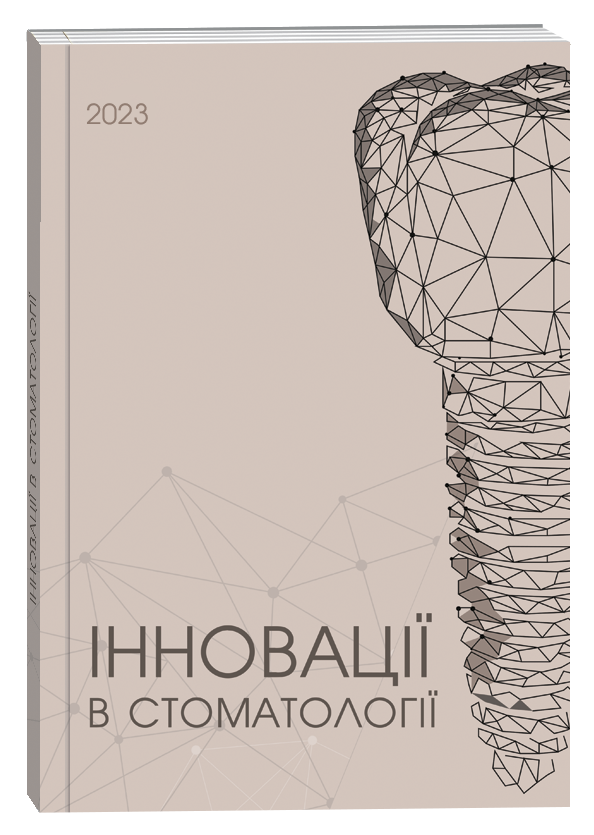EXPERIMENTAL EVALUATION OF ANTIOXIDANT ENZYM ES IN RAT BLOOD SERUM UNDER THE INFLUENCE OF GINGIVITIS MODELLING AND TREATMENT AND PREVENTIVE MEASURES
DOI:
https://doi.org/10.35220/2523-420X/2024.2.2Keywords:
gingivitis, blood serum, experiment, biochemical markersAbstract
The organism’s antioxidant defence plays a key role in maintaining homeostasis and preventing tissue damage caused by oxidative stress. Chronic inflammatory processes, including gingivitis, are accompanied by an imbalance between reactive oxygen species and antioxidant systems, which leads to the destruction of cellular structures and the development of periodontal disease. Despite active research in this area, the role of antioxidant enzymes in gingivitis and their response to treatment and prevention measures remain poorly understood. The purpose of the study was to evaluate the effect of the drug complex on the activity of antioxidant enzymes in the blood serum by modelling gingivitis and to take preventive measures. Materials and methods. The study involved 30 male Wistar rats of 1 month of age, with an average weight of 65–75 g at the beginning of the experiment and 200–210 g at the end of the experiment. The rats were divided into 3 groups. The material for biochemical studies was the blood serum of white rats. The activity of catalase, glutathione reductase and superoxide dismutase was determined in the blood serum of experimental rats. A statistically significant difference between alternative quantitative features with a distribution corresponding to the normal law was evaluated using Student’s t-test. The difference was considered statistically significant at p<0.01. Research results. A significant decrease in catalase activity (by 32.1%), glutathione reductase activity (by 38.5%), and a slight decrease in superoxide dismutase activity were observed in rats with modelled gingivitis. Under the influence of the treatment complex, the activity of antioxidant enzymes was restored, reaching the levels of the intact group. Conclusions. The use of the therapeutic complex leads to an effective reduction of oxidative stress and restoration of antioxidant protection in the conditions of gingivitis, which indicates the prospects of its use for the prevention and treatment of inflammatory periodontal diseases.
References
Muller F. L., Lustgarten M. S., Jang Y. et al. Trends in oxidative aging theories. Free Radic. Biol. Med. 2007. 43, № 4. P. 477–503. https://doi.org/10.1016/j.freeradbiomed.2007.05.034
Kand’ar R., Hajkova N. Assay of total glutathione and glutathione disulphide in seminal plasma of male partners of couples presenting for a fertility evaluation. Andrologia. 2014. № 46. P. 1079–1088. https://doi.org/10.1111/and.12176
Ran Q., Reduction in glutathione peroxidase 4. Free Radic. Biol. Med. 2014. №43. P. 292-301. https://doi.org/10.1093/gerona/62.9.932
European convention for the protection of vertebrale animals used for experimental and other scientific purposes. – Strasburg. Council of Europe, 1986;123:51. https://rm.coe.int/168007a67b
Наказ України «Про затвердження Порядку проведення науковими установами дослідів, експериментів на тваринах» / Міністерство освіти і науки України. 2012. № 249. https://zakon.rada.gov.ua/laws/show/z0416-12#Text
Експериментальні методи дослідження стимуляторів остеогенезу / А.П. Левицький та ін. : методичні рекомендації. Київ : ГФЦ, 2005. 50 с.
Рогач І. М., Керецман А. О., Сіткар А. Д. Правильно вибраний метод статистичного аналізу – шлях до якісної інтерпретації даних медичних досліджень. Науковий вісник Ужгородського університету. 2017. Вип. 2. С. 124-28.








